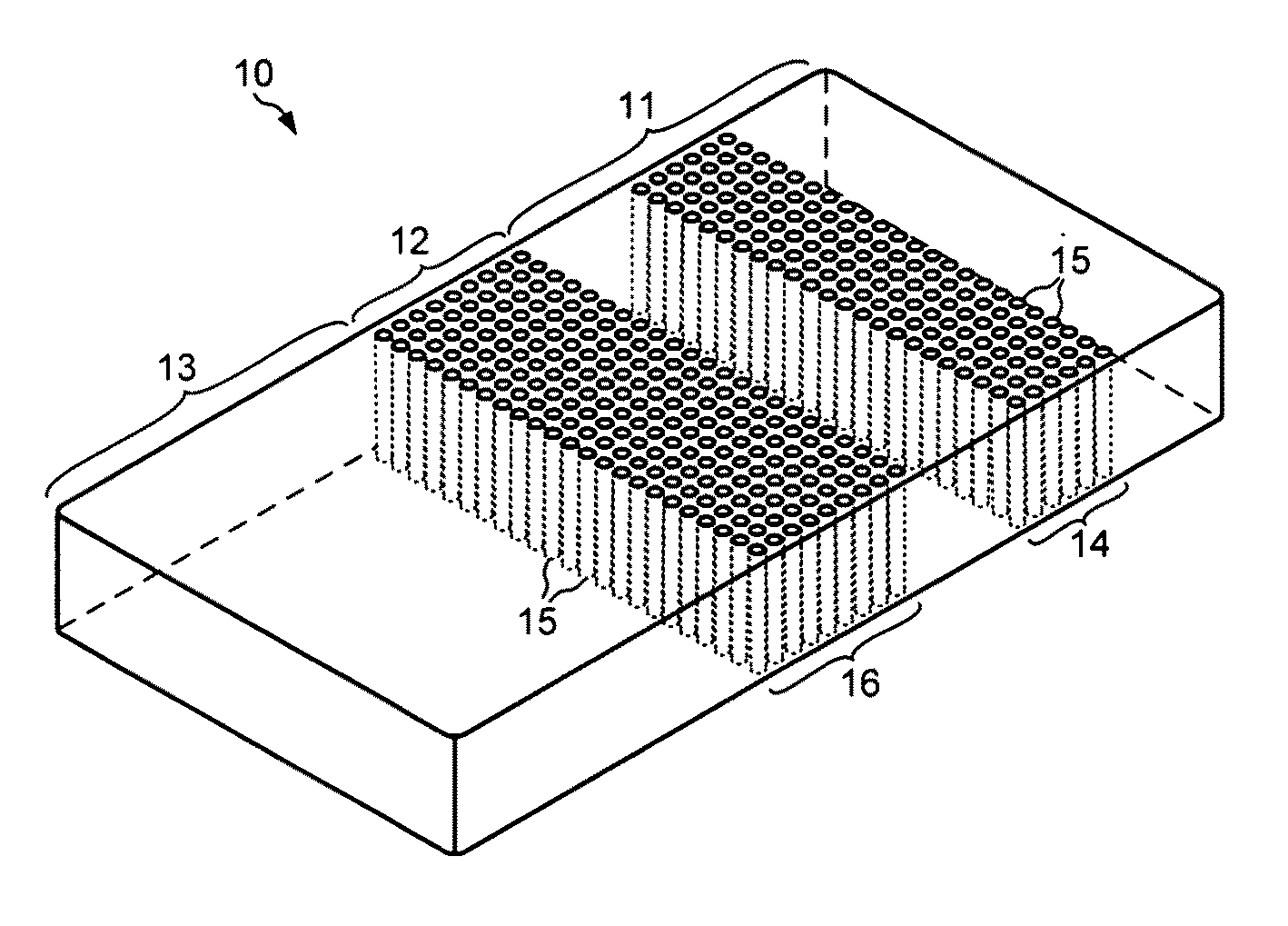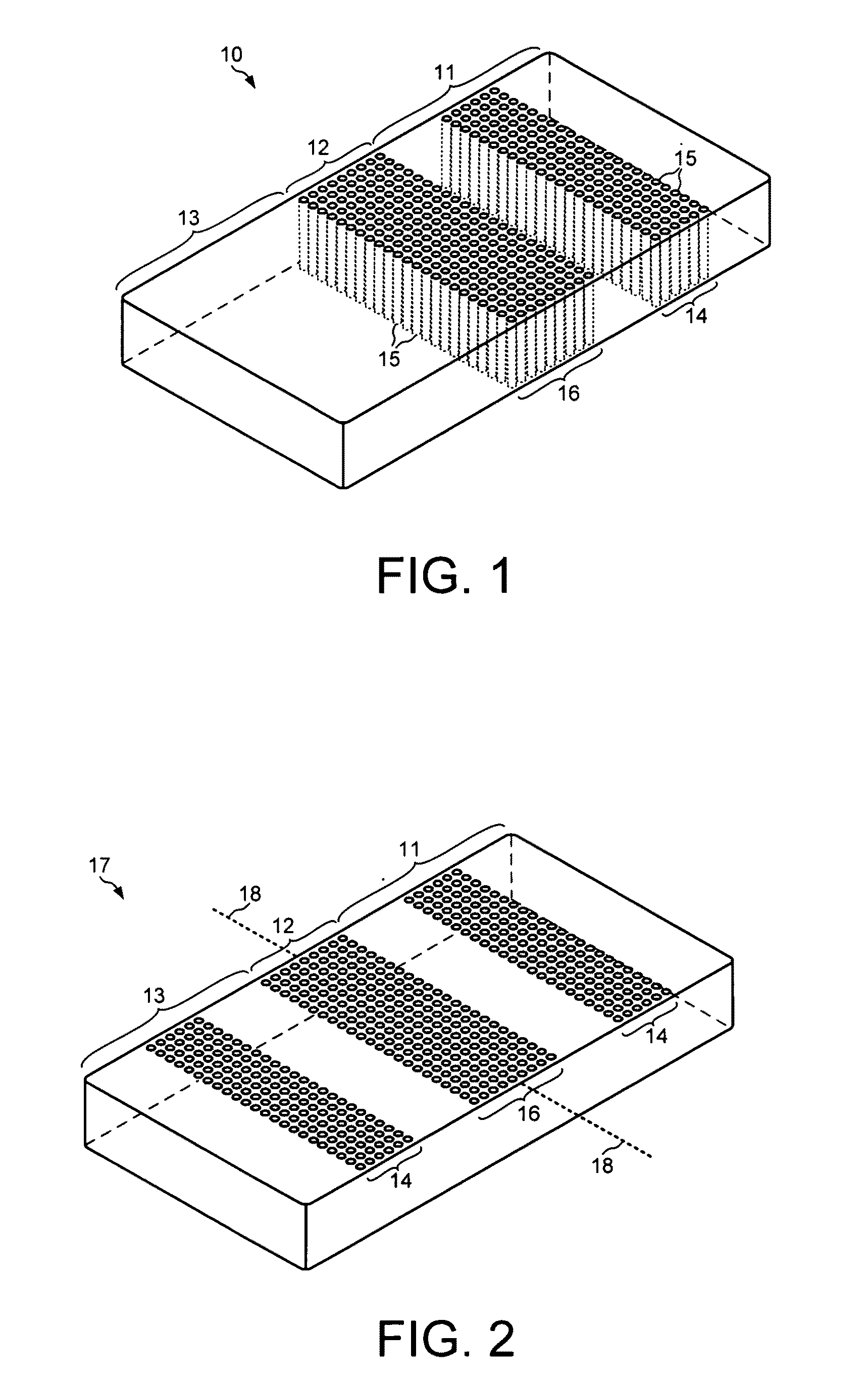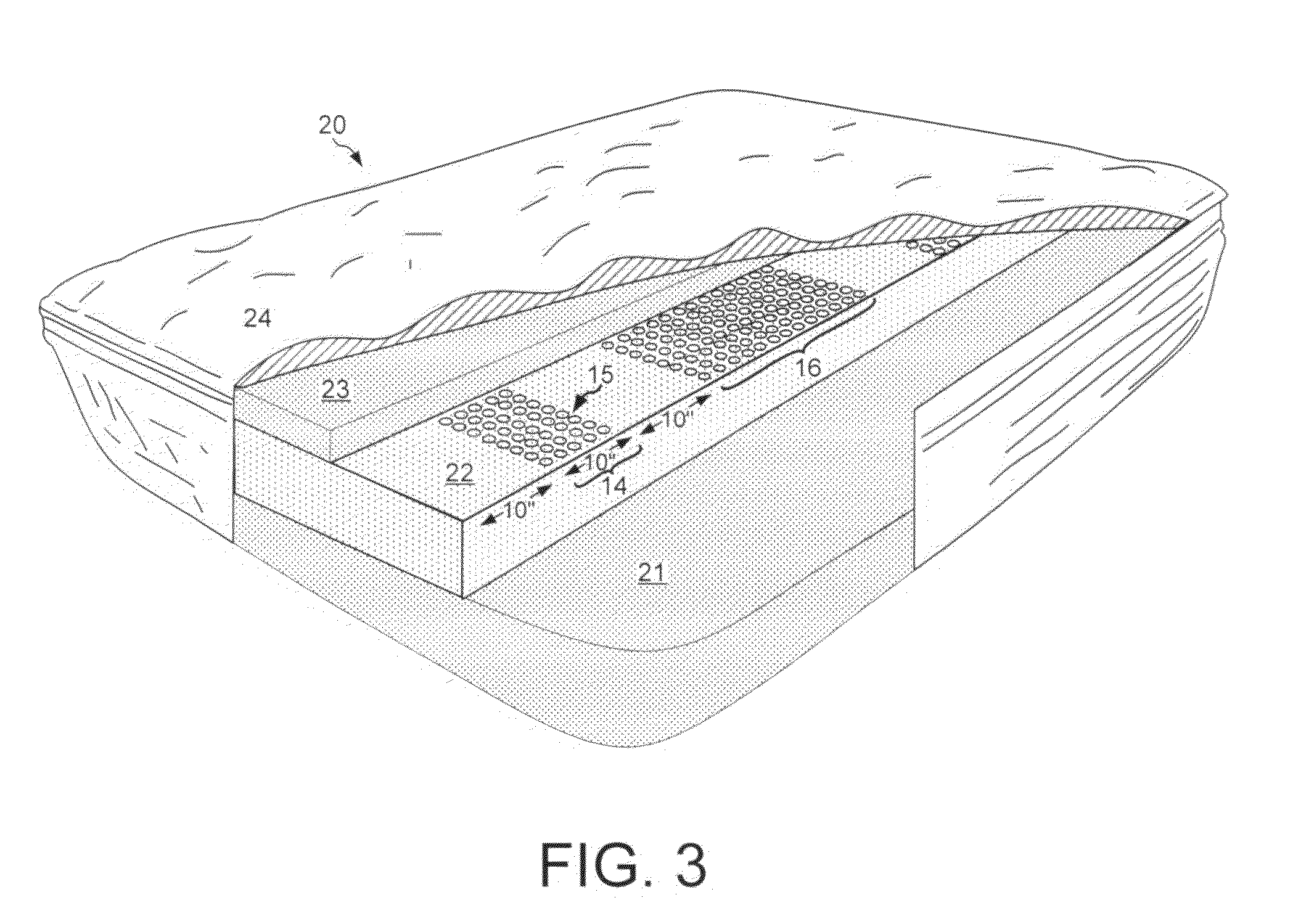Symmetrical pressure relief foam mattress
a foam mattress and symmetrical technology, applied in the field of mattresses, can solve the problems of insufficient support for the head and feet of the body, the middle portion of the body is made to feel hard and uncomfortable, and the foam mattress with a uniform degree of hardness fails to completely satisfy the comfort level required by the body, etc., and achieves the effect of convenient manufacturing
- Summary
- Abstract
- Description
- Claims
- Application Information
AI Technical Summary
Benefits of technology
Problems solved by technology
Method used
Image
Examples
first embodiment
[0016]FIG. 1 shows a pressure relief foam mattress 10 of the present invention that includes a top portion 11, a middle portion 12 and a bottom portion 13. Within top portion 11 there is a lateral region 14 with a plurality of distributed cylindrical holes 15. Lateral region 14 corresponds to the contact position between mattress 10 and the shoulders of a person reclining thereon. There is also a lateral region 16 corresponding to the contact position between mattress 10 and the hips of a person reclining thereon. Holes 15 may be formed through one-step molding in the foam molding process for the foam mattress. A plurality of cylinders are provided inside the mold for the foam. Alternatively, the holes 15 are punched through an already molded foam mattress. Using a foam mold saves on raw materials for the foam as foam is never formed in the area of the holes and is not discarded as when the holes are punched out. Holes 15 may be through holes or countersunk holes. The cylindrical ho...
second embodiment
[0019]FIG. 2 shows the present invention in which a symmetrical pressure relief foam mattress 17 includes a lateral region 14 in both top portion 11 and bottom portion 13. Both lateral regions 14 are disposed symmetrically to the center axis 18 of mattress 17. By placing two symmetrical lateral regions 14 in top portion 11 and bottom portion 13, the consumer cannot lay the mattress down on the bed frame in the incorrect orientation with the head of the mattress towards the foot of the bed frame. Regardless of how the mattress is laid down on the bed, the holes 15 for changing the hardness of the foam are present without fail within the correct area of the mattress to contact the shoulders of the lying person.
[0020]FIG. 3 shows a cut-away perspective view of another embodiment of a symmetrical pressure relief foam mattress 20. Mattress 20 includes a bottom foam layer 21, a middle foam layer 22 with holes 15, and a top foam layer 23. Bottom layer 21 provides support for the other laye...
PUM
| Property | Measurement | Unit |
|---|---|---|
| length | aaaaa | aaaaa |
| size | aaaaa | aaaaa |
| length | aaaaa | aaaaa |
Abstract
Description
Claims
Application Information
 Login to View More
Login to View More - R&D
- Intellectual Property
- Life Sciences
- Materials
- Tech Scout
- Unparalleled Data Quality
- Higher Quality Content
- 60% Fewer Hallucinations
Browse by: Latest US Patents, China's latest patents, Technical Efficacy Thesaurus, Application Domain, Technology Topic, Popular Technical Reports.
© 2025 PatSnap. All rights reserved.Legal|Privacy policy|Modern Slavery Act Transparency Statement|Sitemap|About US| Contact US: help@patsnap.com



